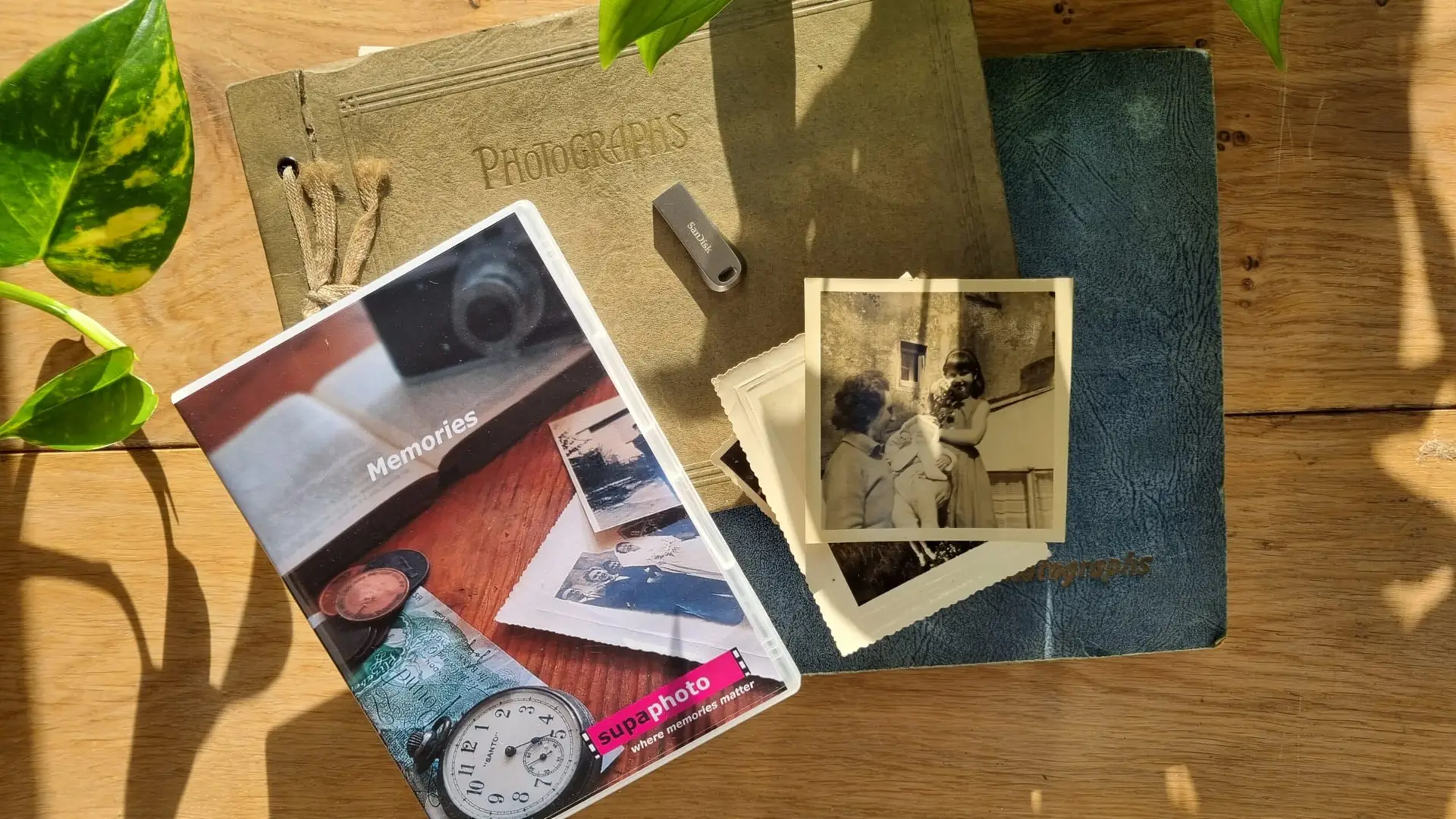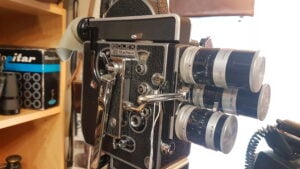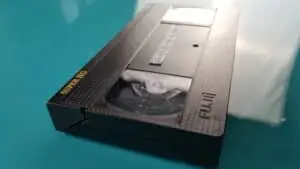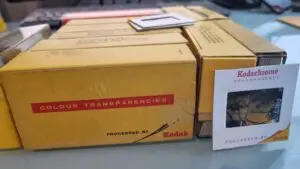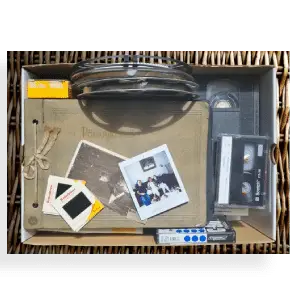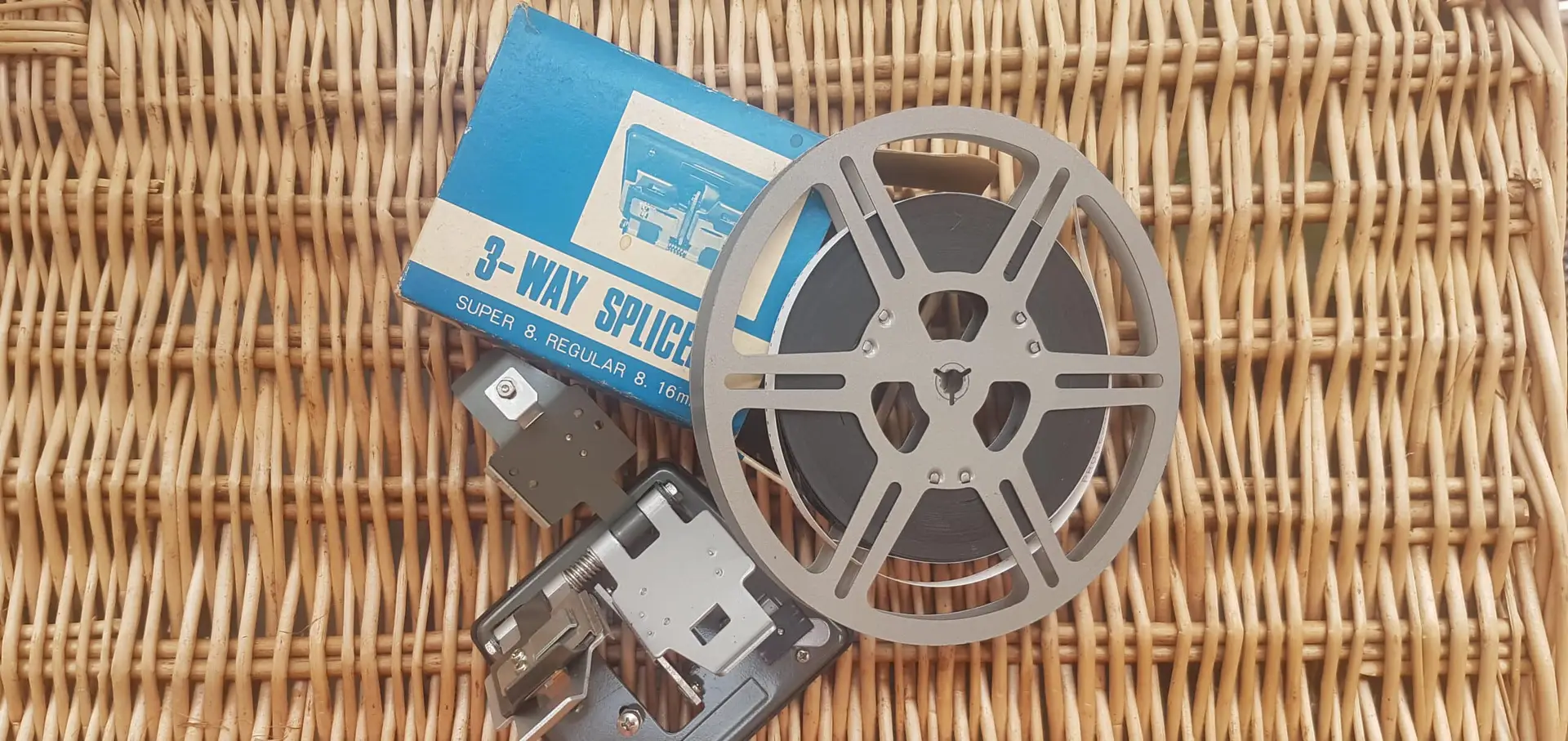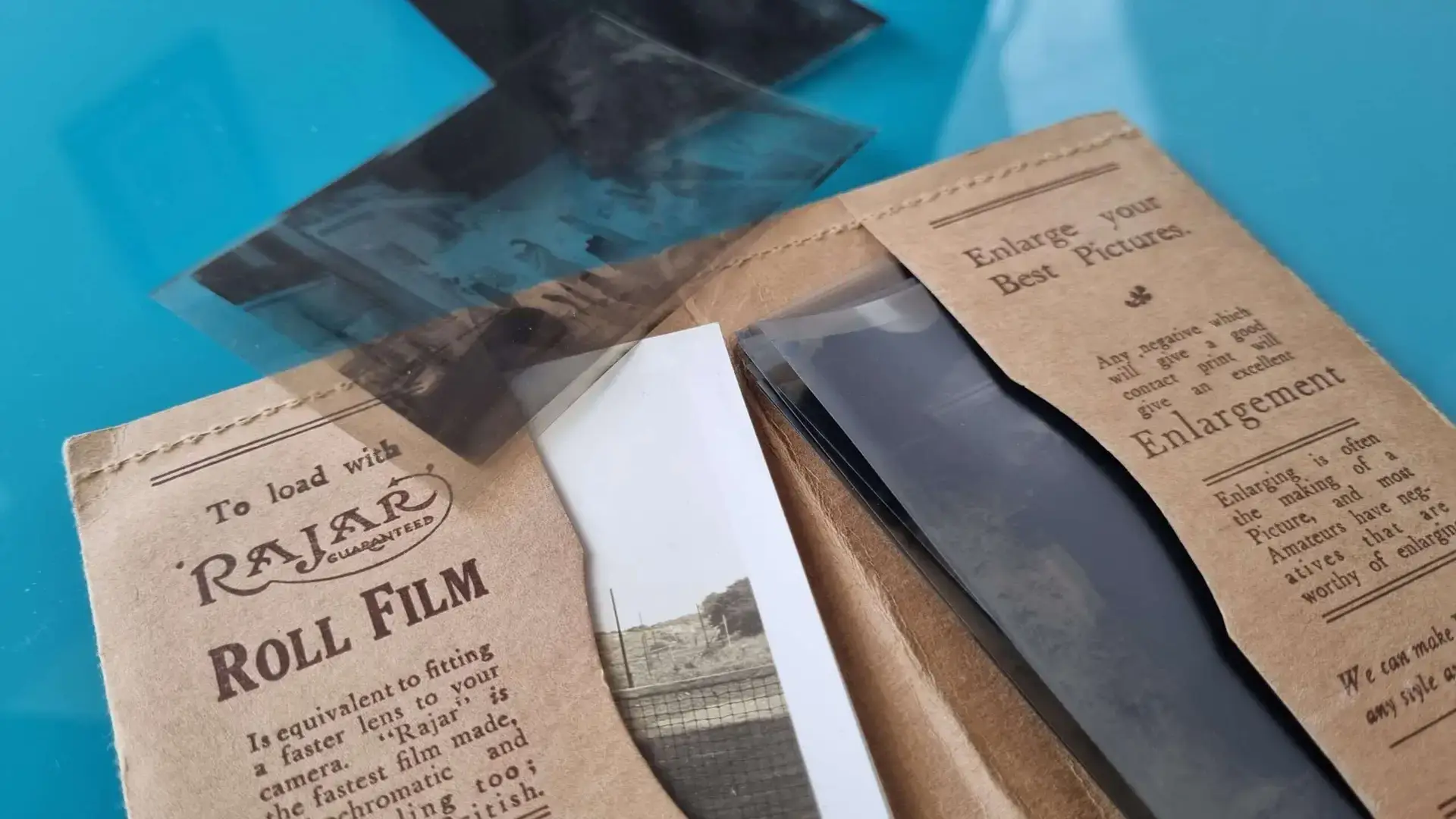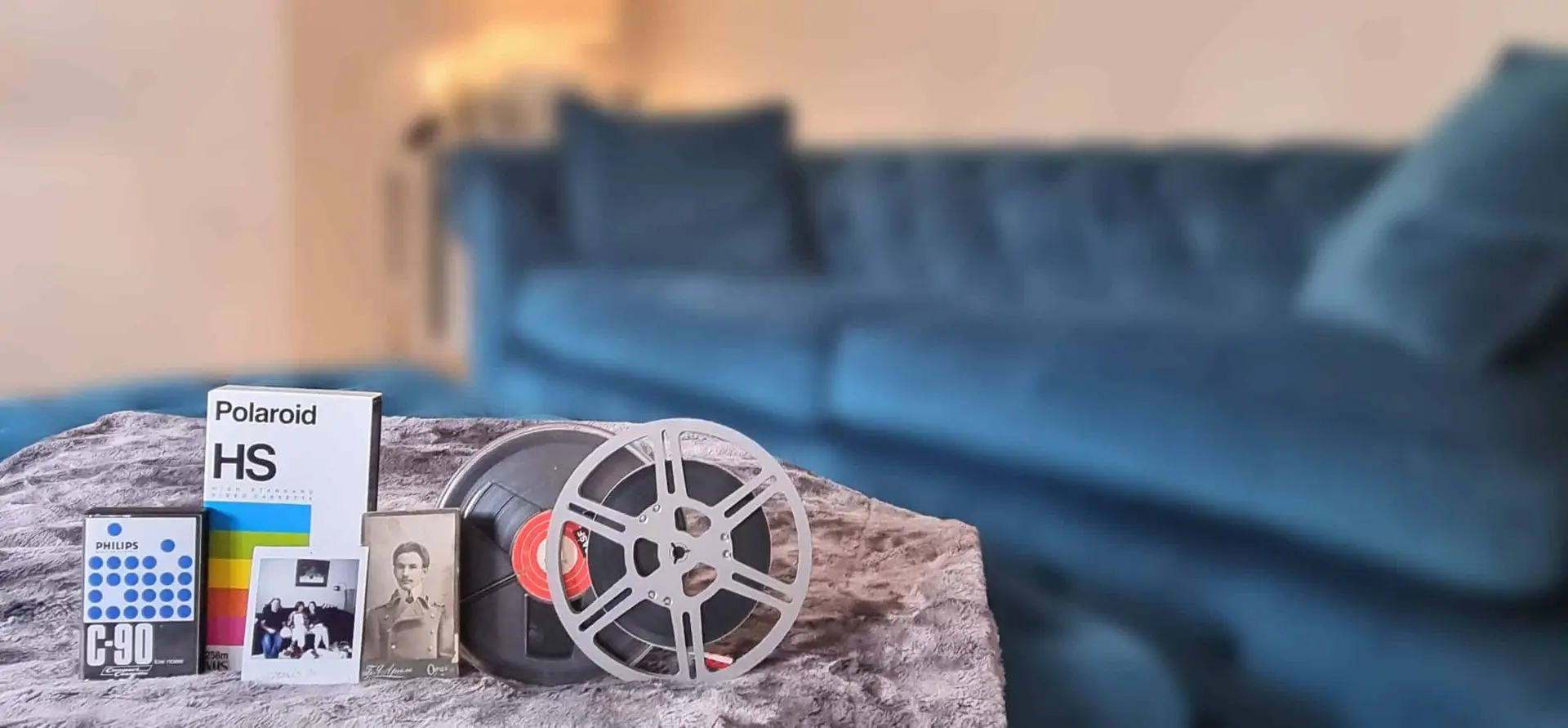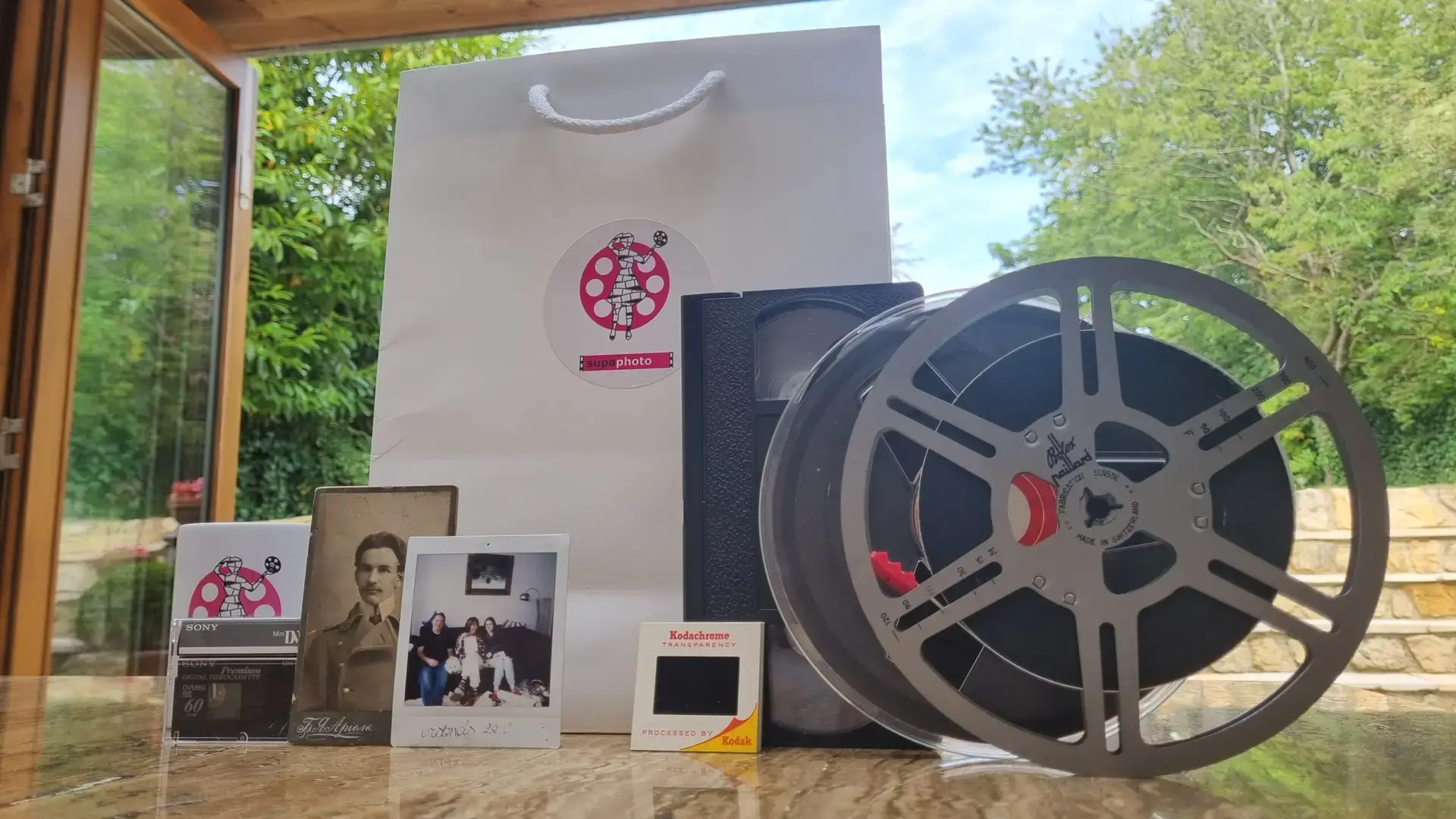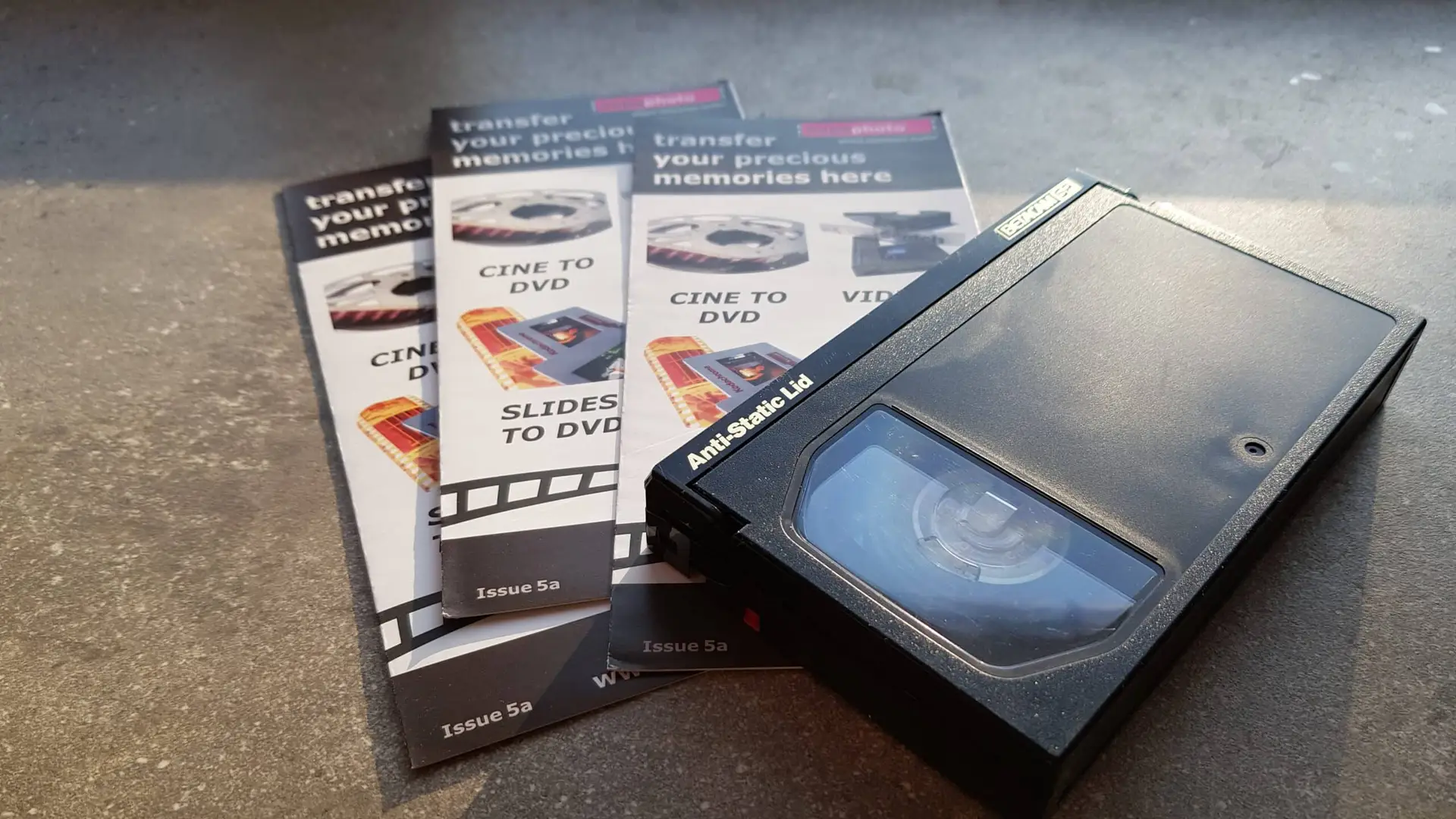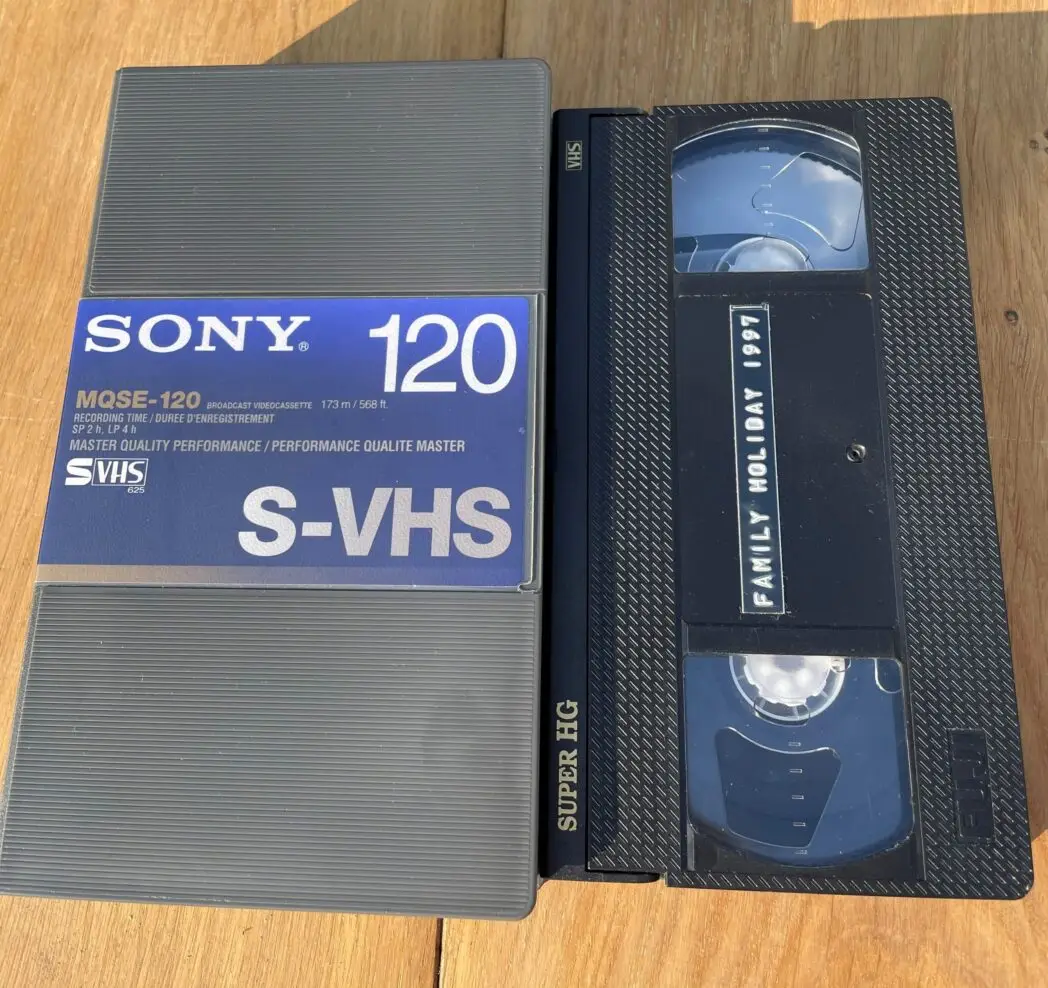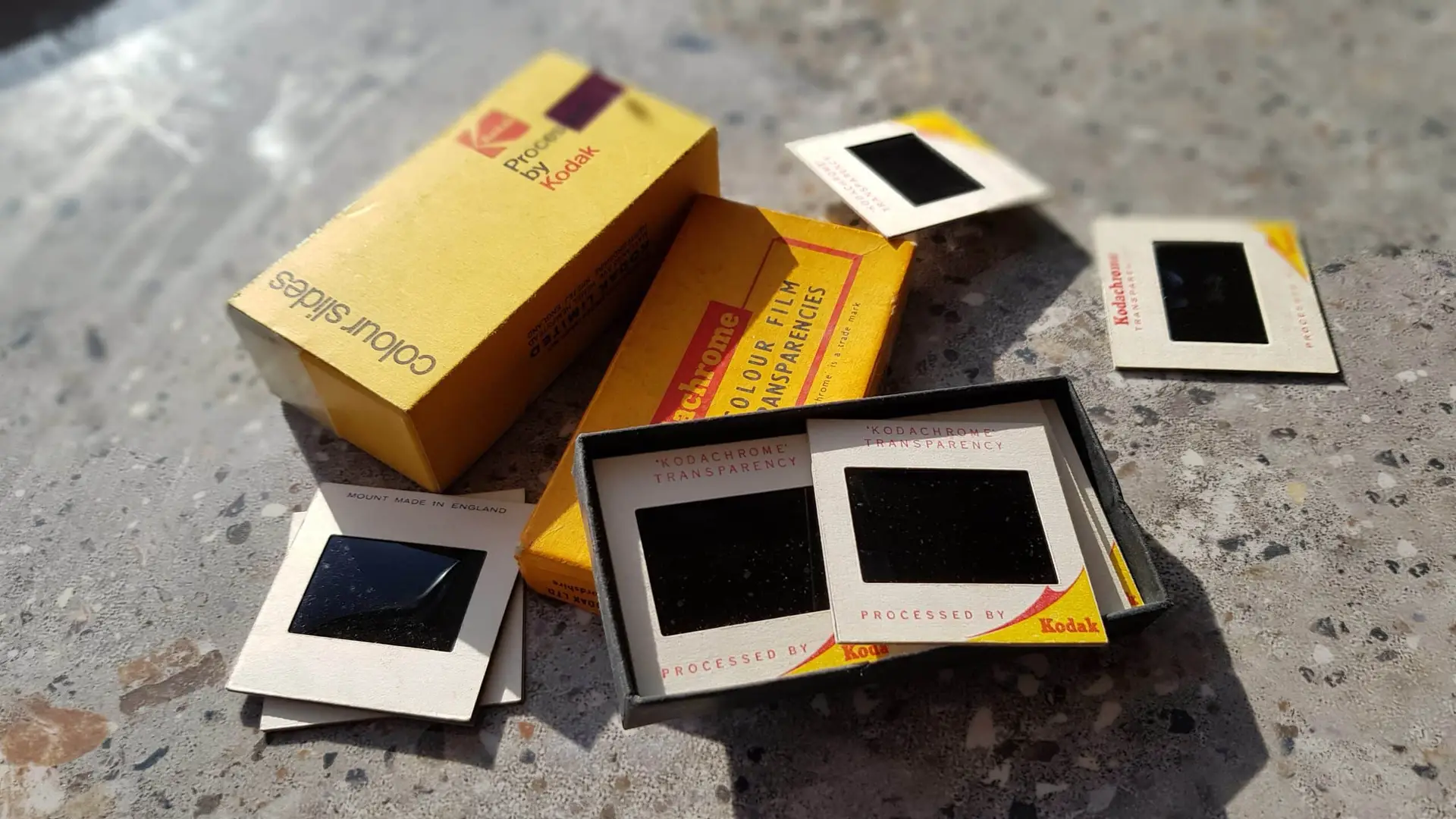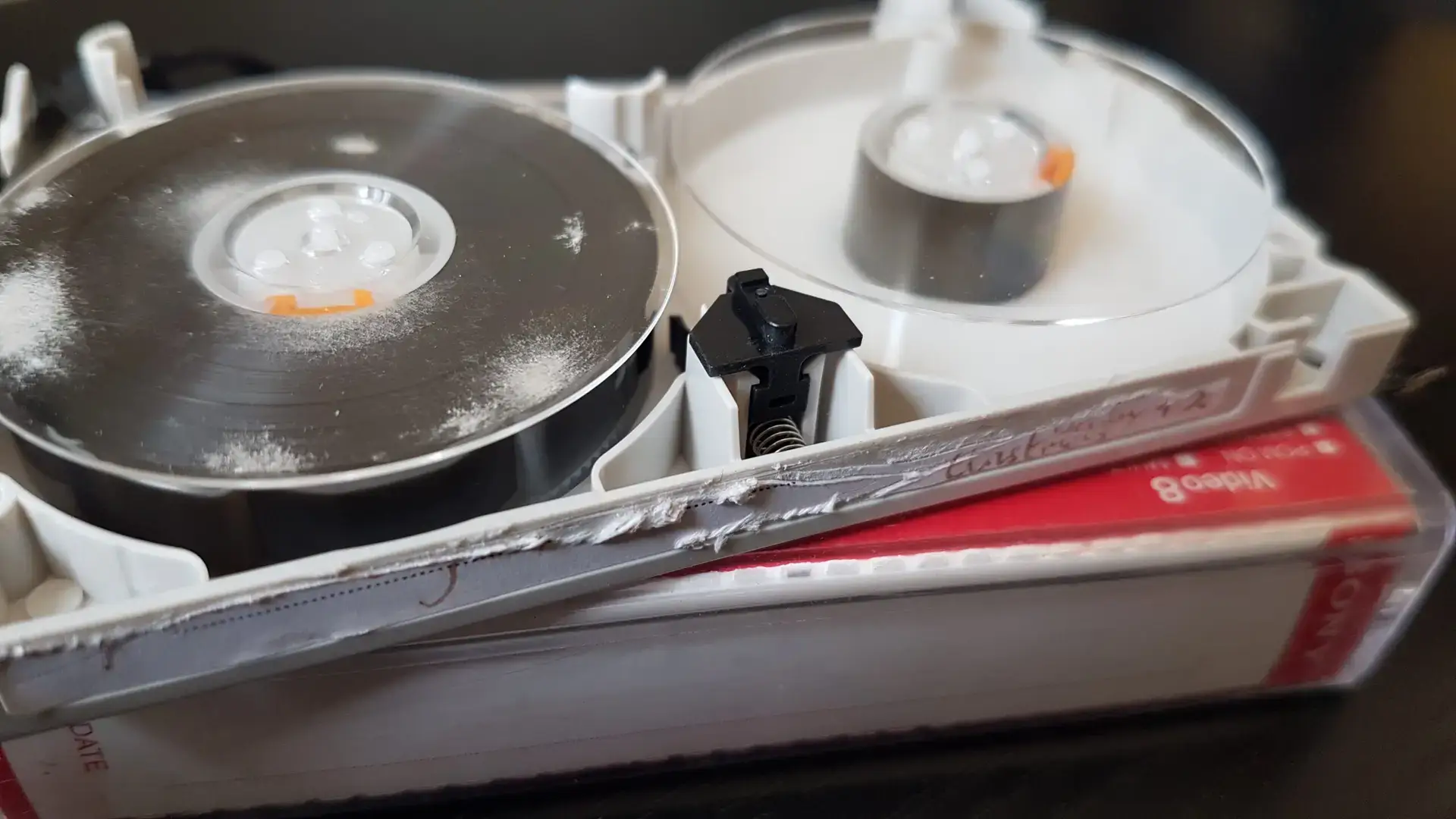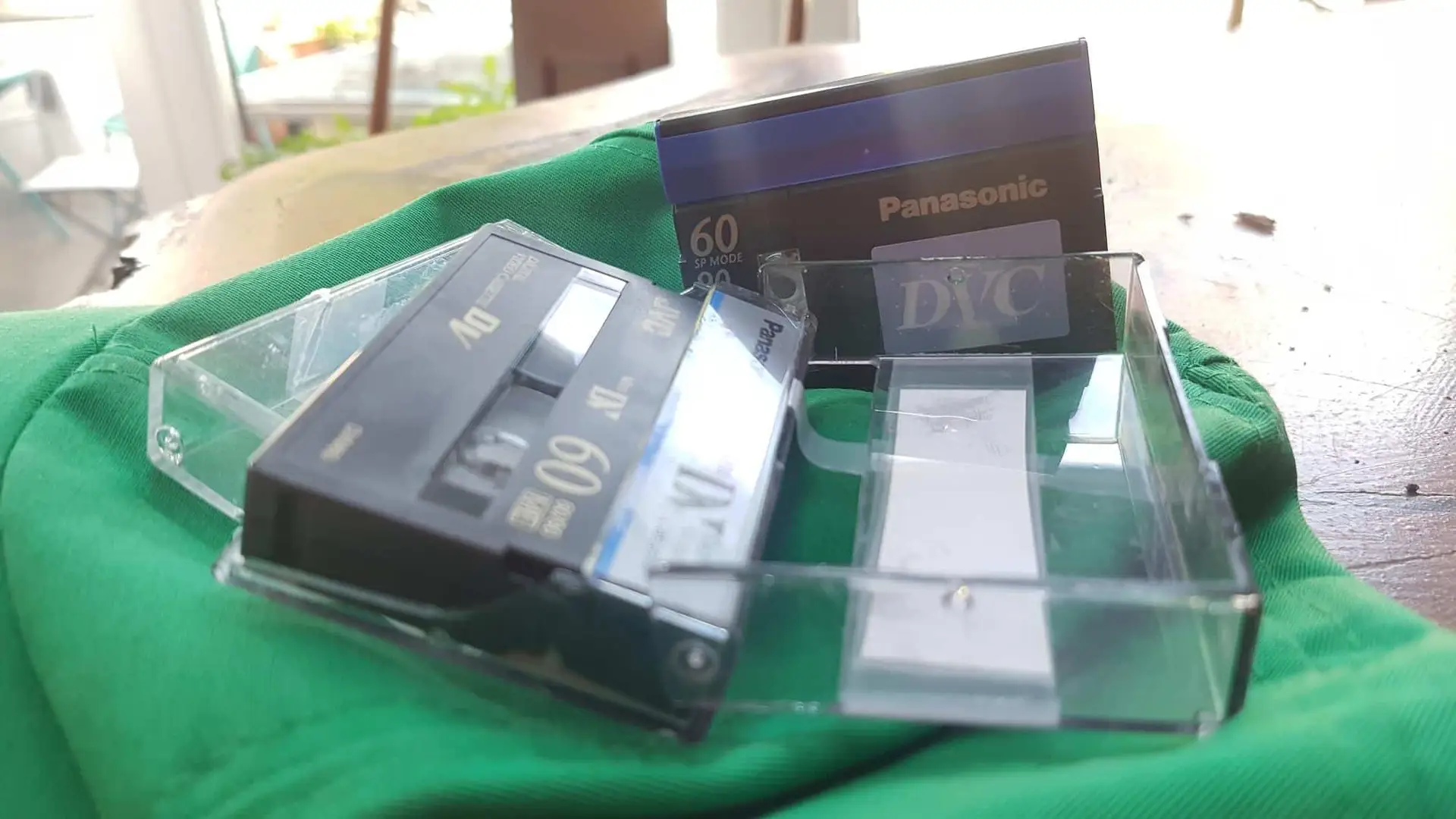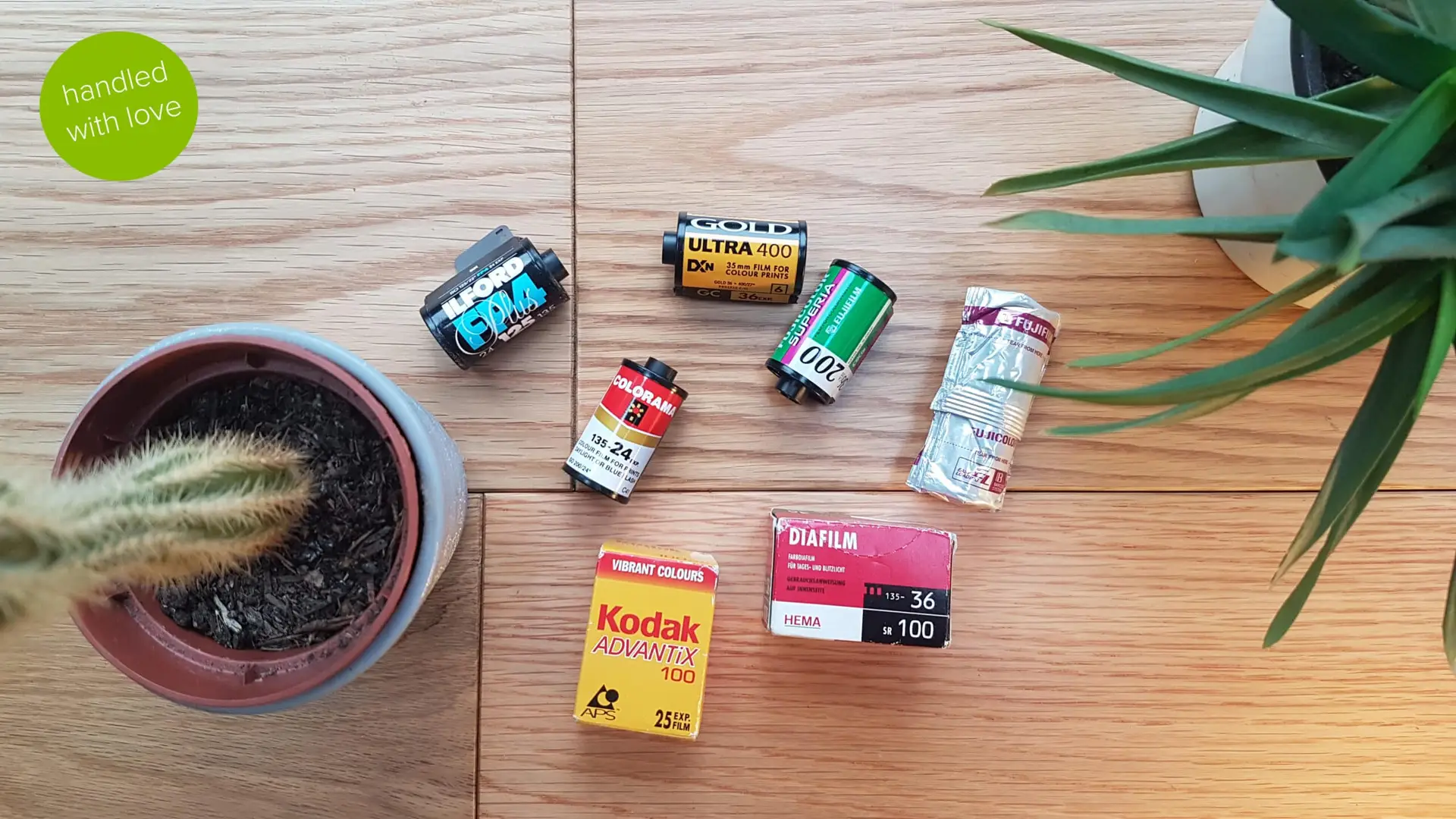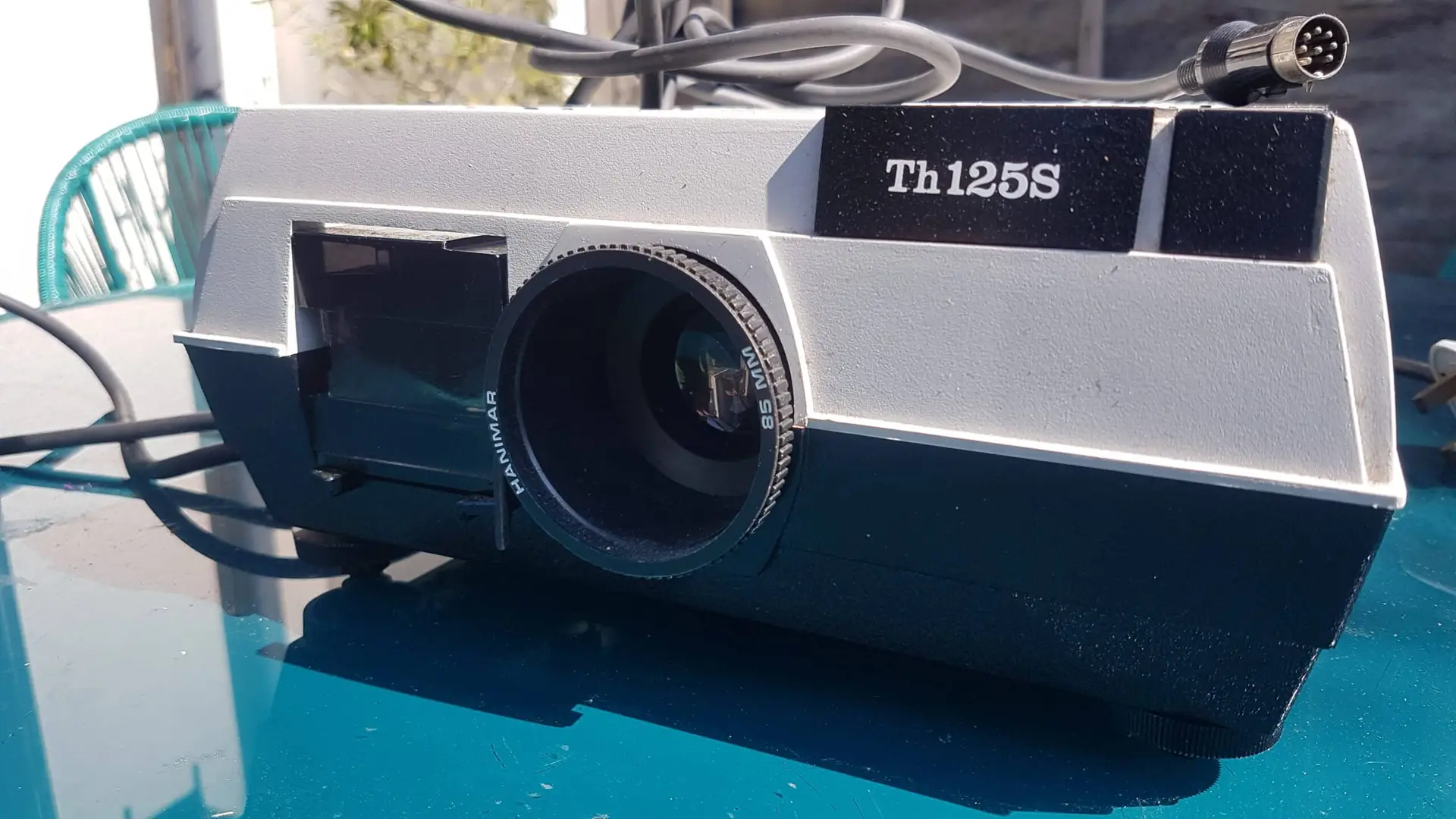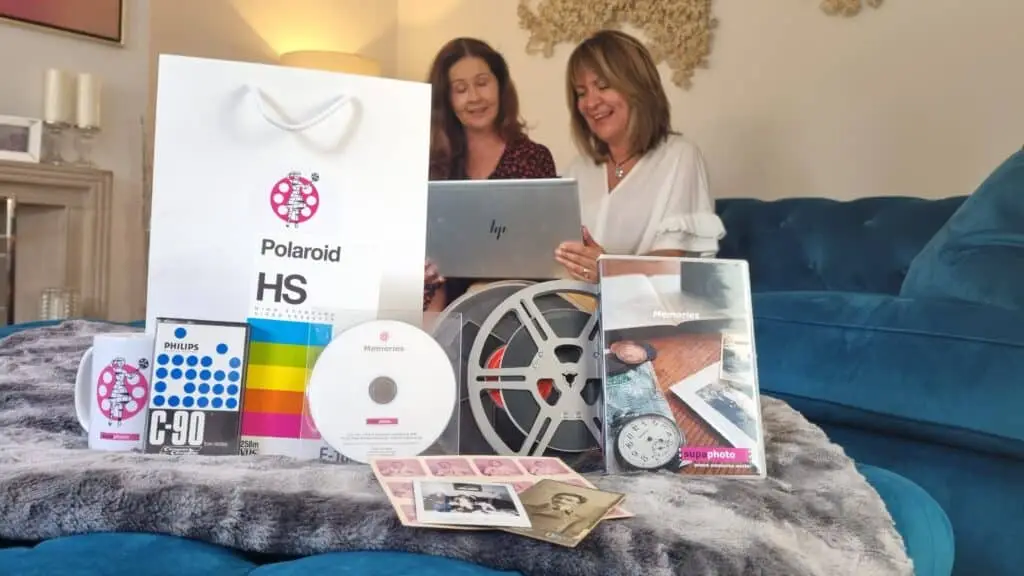A digital photo album is a curated set of scanned or born-digital images arranged in share-ready files that you can store, search and view on any device. Converting a paper album into pixels keeps memories safe from fire, flood and fading while unlocking instant sharing.
Six fast steps:
- Select a clear theme.
- Gather originals and scan album pages.
- Sort visuals chronologically or by story arc.
- Add descriptive or witty captions.
- Design in user-friendly software.
- Export, back-up and share with family.
Why switch from shoebox to screen
Scanning an ageing scrapbook may feel daunting, yet a cleverly built digital photo album frees cherished memories from dusty cupboards and turns them into vibrant, searchable stories. Unlike brittle prints, pixels don’t yellow, and an online flip-through beats hauling heavy folders out of the loft. Cloud backups mean you’ll never lose wedding smiles or baby first-steps if a pipe bursts. A modern album also sidesteps the chemical residues once found in traditional photographic paper, making it the eco-positive choice.

What you’ll find in this guide
- Every line from the original briefing is rewritten (nothing skipped).
- Best-practice SEO tweaks keep keyword density below 2 %.
- Internal links point to helpful Supaphoto pages.
- External links lead only to authoritative UK sites.
- No visible HTML or CSS—just clean text, headings, lists and links that WordPress converts automatically.
The practical workflow
Step 1 – Choose a compelling theme
Holiday road-trip? Nan’s centenary? A single Saturday football match? The narrower the scope, the stronger the narrative punch. Popular picks:
- Family holiday albums full of sunsets, silly faces and landmark poses.
- Milestone birthdays where candle-blowing and hugs abound.
- School-year chronicles showing term-time triumphs and club adventures.
- Anniversary retrospectives charting weddings, businesses or volunteer causes.
Step 2 – Collect and scan your images
Phones bulge with selfies, yet attic boxes still hide priceless Polaroids, 35 mm slides and colour-shifted negatives. High-resolution equipment matters: scanners built on DSLR sensors capture deeper shadow detail than entry-level flatbeds, crucial when enlarging heritage shots to poster size.
Expert Insight (Royal Photographic Society, 2024)
“DSLR-based scanners record 42 % more colour data on average than budget flatbeds, preserving subtle skin tones.”Step 3 – Organise logically before design
People leave albums half-done because image piles feel overwhelming. Aim for 60-120 photographs for a snappy five-to-ten-minute slideshow; oversized projects lead viewers to tune out. Create folders like Arrival, Ceremony, Reception if you’re documenting a wedding, or simply label by month. Consistent naming such as “2023-07-France-Beach-001” later speeds searching.
Expert Insight (University of the Arts London study, 2025)
“Viewers stay engaged 25 % longer when sequences follow a clear chronology versus random ordering.”
Step 4 – Caption with personality
Captions transform static frames into a living diary. Mix practical notes (“Dad’s Mk III Cortina, Brighton seafront, May 1974”) with affectionate humour (“Mum’s perm defied gravity and common sense”). In UK English keep spelling tidy—colour, favourite, organise—so search engines recognise regional relevance.
Step 5 – Choose software that matches ambition
| Software | Stand-out strength | Ideal user |
|---|---|---|
| Google Photos | Free AI grouping of faces, dates and places | Quick, cloud-first storytellers |
| Adobe Photoshop Express | Robust edits, blemish removal | Hobbyists wanting pro polish |
| Canva | Drag-and-drop templates plus print ordering | Beginners craving speed |
| Affinity Publisher 2 (2025 update) | Precision layout without subscription | Designers crafting print books |
Template-driven tools cut layout time dramatically; bespoke apps allow pixel-perfect control for heirloom projects.
Step 6 – Publish, back-up and enjoy
Export in JPEG, HEIC or PDF depending on end use. Store a master copy on two drives plus a cloud vault. Share via private link, cast the slideshow during reunions, or print a linen-bound keepsake.
Pitfalls of the DIY route
- Time sink – Cleaning, scanning and retouching 400 images can swallow weekends.
- Equipment limits – Cheap scanners crush album spines or crop edges.
- Colour drift – Consumer software may mis-profile fading dyes, producing orange casts.
- Metadata maze – Mis-typed dates wreck automatic sorting later.
Quality counts more than quantity in reviews
Thinking of hiring a scanning firm? Check Google ratings: 2 000 reviews at 4.9 ★ signals dependable quality, whereas 10 000 reviews at 3.8 ★ hint at inconsistency. Look for sample before-and-after galleries, data-security certificates and insured courier options.
UK digitisation snapshot (statistics updated May 2025)
- The British Library doubled public access to digitised image collections during 2024, topping 420 million files (source: BL Digital Scholarship Blog).
- A National Archives machine-learning programme now auto-tags 3.5 million images annually, shaving months off cataloguing time (source: Deep Discoveries project).
- Analysts at IBISWorld forecast the global photo-scanning sector to expand 11 % CAGR through 2033.
Table – Creative projects once your photo album is digitised
| Idea | Purpose | Quick tip |
|---|---|---|
| Family Yearbook | Capture twelve months per spread | Use QR codes to embed home-video links |
| Heritage Wall Print | Turn montage into large canvas | Choose 300+ dpi files |
| Interactive Family Tree | Merge pictures with genealogy apps | Link each face to an ancestor profile |
| Virtual Reunion Slideshow | Stream stories to distant relatives | Keep under ten minutes |
| Anniversary Gift Box | Curate milestone USB set | Include voice-note narrations |
Conclusion
Turning fragile prints into a resilient digital photo album keeps family stories alive for generations and supports remote sharing. Supaphoto Ltd’s hand-finished service, triple-back-up policy and 4 000 dpi scans make them a reliable partner, whether you need simple cloud files or exhibition-quality enlargements.
- Stay in the loop – Sign up to our newsletter for monthly how-tos on safe scan album practice, storytelling and file security.
- See it live – Book a ten-minute virtual demo of our non-invasive scanners and colour-restoration workflow.
- Spread the love – If this guide helped you, share it on social media and tag #SupaphotoStories to inspire others.
The Professional edge (final 100-word emphasis)
Ultimately, DIY enthusiasm rarely matches professional consistency. A company like Supaphoto Ltd calibrates sensors daily, stores RAW scans in a climate-controlled vault and applies gentle, reversible restorations that respect photographic heritage.
Every job includes meticulous dust mapping, crisp cropping and fully documented metadata, handing you organised files that drop straight into cloud libraries or bespoke print orders.
When you trust a specialist you save time, avoid re-scanning mistakes and gain peace of mind that irreplaceable negatives, slides and albums are shielded by insurance and ISO-certified workflows. Learn more at the official Supaphoto home page.


